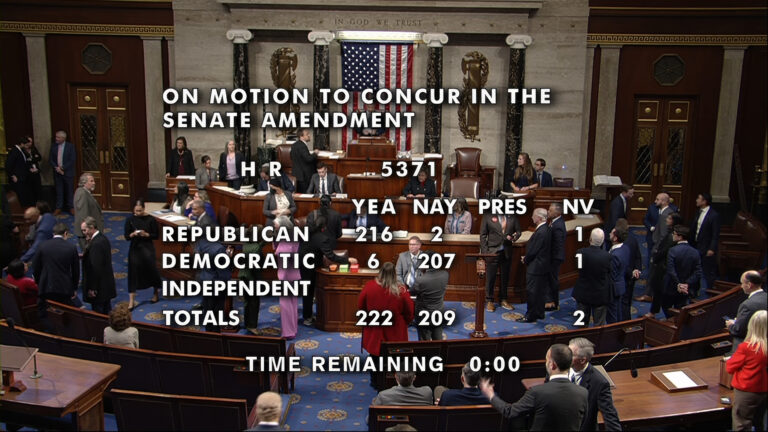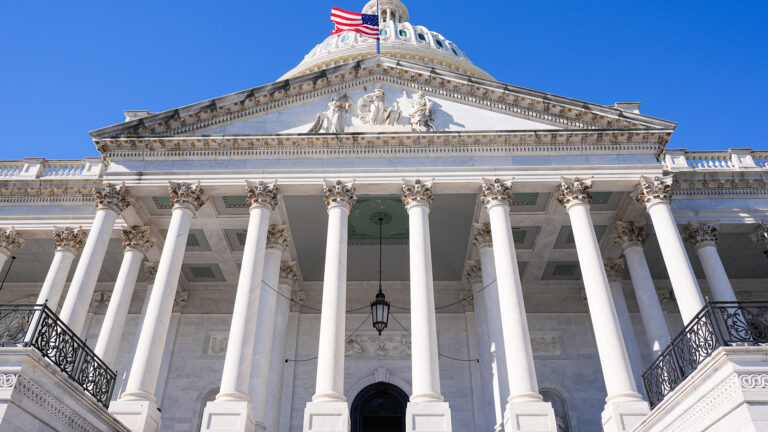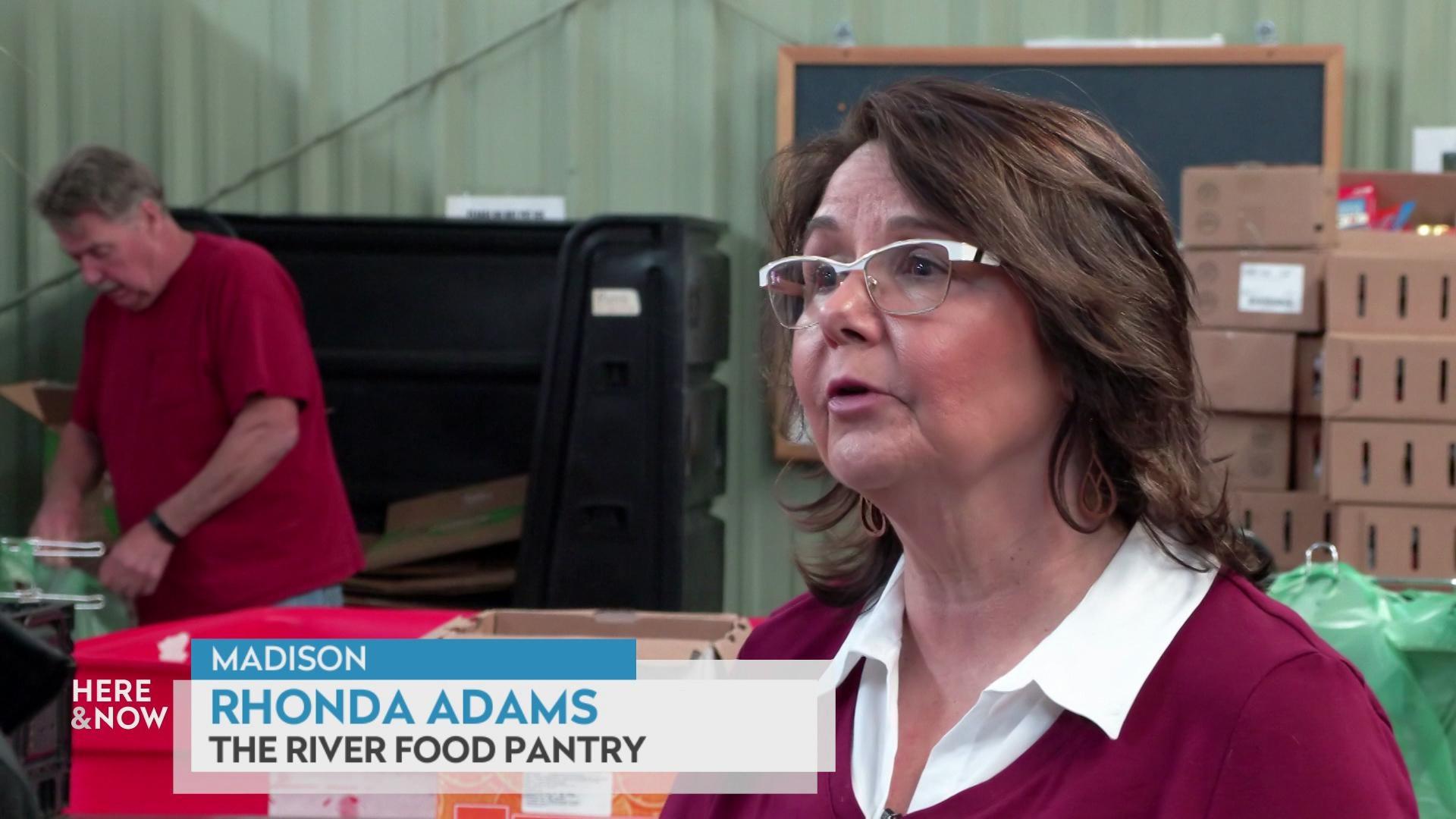Frederica Freyberg:
Over stiff opposition, the state Public Service Commission voted unanimously this week to approve a nearly 100-mile long high-voltage transmission line from Iowa through southwest Wisconsin. The Cardinal-Hickory Creek line will start in Dubuque and head through Wisconsin to just west of Madison. Rate payers in Wisconsin will pay about $67 million of the $500 million project. The vote came amid opposition from land owners in the region and conservation groups, as well as several state legislators whose districts are located along the power route. The PSC chair, a Governor Tony Evers’ appointee, said the decision was difficult, but has long-term value.
Rebecca Valcq:
This all-of-the-above approach is not only for the types of energy to be produced but where the clean energy comes from. We need clean energy resources built right here in Wisconsin, but we also need access to those resources from other states. The only way to access clean sources of power outside of Wisconsin is with transmission. For me, the risks of not building this line and being wrong are just too great. I’m voting for the project to ensure energy reliability in our region and access to lower cost, clean energy can be achieved.
Frederica Freyberg:
The chair’s view that new lines can be a link to clean energy is shared by RENEW Wisconsin, a non-profit organization that promotes renewable energy in the state. Tyler Huebner is the executive director of RENEW and he joins us now. Thanks a lot for being here.
Tyler Huebner:
Thank you for having us.
Frederica Freyberg:
So tell us why you and RENEW are in favor of this high-voltage line.
Tyler Huebner:
I go around the state and give talks about the rapidly changing landscape of renewable energy. And we’re really seeing these revolutions both on the distributed renewable side, solar on rooftops of homes and buildings, but also in our utilities, and utility scale renewables. Where we’ve seen the costs of solar come down about 88% in a decade, the cost of utility scale wind come down 69% in a decade. And there is just tremendous momentum behind this transition away from coal and towards clean renewable energy, but in Wisconsin, we’re still 55% coal-fired power plants for our electricity as of 2017. So we see this line as a link that’s going to enable more renewable development not only in the Midwest but also actually in Wisconsin.
Frederica Freyberg:
So you think that this transmission line will help Wisconsin become carbon-neutral by 2050 as is the declared goal of the Evers’ administration?
Tyler Huebner:
Exactly. Governor Tony Evers has just reinstated this goal with his executive order last week for the state to be 100% carbon-free electricity by 2050. We view this line as a link to help make that happen. We think a lot more needs to happen besides that, clearly, and we understand the complexities of reaching that goal. We think distributed energy has a humongous role to play in that, but we also think the scale of transitioning our grid away from coal and to large-scale wind and large-scale solar is going to require an investment like Cardinal-Hickory Creek.
Frederica Freyberg:
But will the wind energy from Iowa, Minnesota and the Dakotas just pass through this Wisconsin line headed for other states that are east of us?
Tyler Huebner:
No, Wisconsin is — you know, we’ve got the Madison area and we’ve certainly got Milwaukee. Those areas are well connected by transmission today, and this is really the final link of 17 lines throughout the whole Midwest and this energy is going to come into Wisconsin. We think it’s very exciting because we know that it’s very low cost. As I said, the cost of wind power has come down almost 70%. The way that the Midwest market works is the lowest cost resources get deployed first. And so that wind is going to come in first and then more expensive stuff is going to get layered op top of it. And we think over time, it’s actually going to displace more of our coal-powered generation in the state.
Frederica Freyberg:
Isn’t this transmission line also for fossil fuel?
Tyler Huebner:
Well, it is part of the entire Midwest grid. And so it’s going to — you know, the power plants that are on today are going to be able to use that line, that’s true, but we also have to look at what is that future mix going to look like and how do we get there. And in our view, this is the type of line that’s going to allow lower cost wind and lower cost solar to actually displace higher cost, specifically coal power plants as time goes on.
Frederica Freyberg:
Now I know that American Transmission Company and the PSC said this line was needed to provide reliability in energy, and yet I understand the other experts say that there’s a surplus of electricity supply in Wisconsin, and reliability isn’t an issue. What about that?
Tyler Huebner:
Yeah, so this project was one of 17 projects called the “Multi-value Project Portfolio,” or “MVP Portfolio” throughout the MISO region. All 17 of those were studied together, but each line had to provide net positive benefits to the whole region in terms of increasing reliability, in terms of allowing lower cost energy to flow, and reducing congestion between different areas, and third, to help us as our states, to help our states meet increasing renewable energy targets. Now that was back in 2011. In that time when they studied it originally, they predicted by 2025, we would have about 13,000 megawatts of wind in the Midwest. That would be about 7% of MISO, the Independent System Operators’ electricity. So their prediction was 13,000 by 2025. We’re already over 16,000 megawatts today, with about — and we will soon, in 2020, be at about 24,000 megawatts. So we’re going to be more than twice the amount of wind that they predicted for 2025. We’re going to hit that by 2020. There’s another 20,000 megawatts beyond that, and then there’s about 20,000 more in earlier stages. So we could be, by 2025, 2030 time frame, 6 to 10 times more wind in renewables than what they had studied previously. So that market is just changing so dramatically, and it’s actually forcing the conversation back to the Midwest Independent System Operator. You have to plan faster because this revolution is here.
Frederica Freyberg:
All right. Tyler Huebner, thanks very much.
Tyler Huebner:
You bet.
Frederica Freyberg:
More now on the Cardinal-Hickory Creek transmission line and another view. The Driftless Area Land Conservancy is dedicated to the preservation of the natural landscape of southwest Wisconsin. The conservancy opposes the new transmission line and is represented by Howard Learner, an attorney with the Environmental Law and Policy Center out of Chicago. Thanks very much for being here.
Howard Learner:
Good to join you.
Frederica Freyberg:
So I understand that you do anticipate filing a law suit over this PSC ruling.
Howard Learner:
The Driftless Area Land Conservancy and the Wisconsin Wildlife Federation who said the commission got it wrong; as a matter of law, as a matter of fact and as a matter of policy, if they try to do an interim order that reflects the discussion earlier this week. If so, they’ve said we’re going to appeal.
Frederica Freyberg:
On what specific grounds did they get it wrong?
Howard Learner:
First of all, the law in Wisconsin is, you have to demonstrate that the transmission line is needed for reliability. This one isn’t. Wisconsin has a surplus of power, the staff of the commission testified that it wasn’t needed. There’s extensive evidence in the record. The commission also has to look at the impact on the environment. And when it comes to the environment, this is a huge transmission line with 17-story high towers going through the heart of the Driftless area. It would cut a wide swath right through the middle of the Driftless area. Harm communities, farms, people, natural resources. Go through the Black Earth Creek Watershed as well. And on that, the commission didn’t give enough weight to it. The commission said we think this line should go forward, so the environmental piece of it, that’s just got to go. And finally, this is a transmission line that faced unprecedented public opposition. Thousands of people turning out at public hearings, and the legislators, both Republicans and Democrats from the area, the Dane County Board, the Iowa County Board all saying to the commission, don’t do this. And the commission has disrespected the people in southwest Wisconsin and the public officials in southwest Wisconsin.
Frederica Freyberg:
Given that opposition, were you surprised by the vote?
Howard Learner:
You know, I was surprised that the commission seemed to know what they want to do. They didn’t look at the testimony that was put in by the intervenors here, the head of the Federal Energy Regulatory Commission during the prior administration, one of the top energy experts in the country, George Meyer, head of the Wisconsin Wildlife Federation, former secretary of Wisconsin DNR. A whole team of experts. And indeed the commission ignored and in effect refuted its own staff’s testimony. We expected better from the commission. We’re very disappointed.
Frederica Freyberg:
What about the argument from supporters that this transmission line will be a cornerstone in the transition from fossil fuels to a clean energy grid?
Howard Learner:
Well, you’ve got to go to the testimony in the record. That sounds nice, but Mary Neill, who was the expert witness for the Citizens Utility Board explained this transmission line is going to carry fossil fuel, as much if not more so than wind. So this is not a wind-only line. There’s nobody who can seriously make that case. This line according to the Citizens Utility Board testimony and other testimony in the record is going to carry fossil. So it’s not a line that solves those problems. And there are better ways to develop the clean energy economy in Wisconsin.
Frederica Freyberg:
And I was just going to ask that. What should Wisconsin be doing to get to carbon neutral?
Howard Learner:
Here’s what Wisconsin could be doing that would be much better. And it would avoid that sort of impact on the Driftless area. The terrible damage this will create. First of all, continue to aggressively develop renewable energy here. There’s 4500 megawatts of solar energy in development in Wisconsin. That’s more than any other state in the Midwest. That’s really big time progress and there’s some wind projects that are going forward too. Secondly, we need to be much smarter on energy efficiency. Energy efficiency saves consumers, saves businesses money. The best, the fastest, the cheapest solution to our climate change problems. And finally, as the staff talked about and a number of the parties talked about, there’s some existing transmission lines in southwest Wisconsin that are old and not as efficient as they may have been. Upgrade them, make them work better. Use this sort of modern transmission technologies that are more efficient, deliver more bang for the buck. When all’s said and done here, there are much better alternatives, much better ways to meet Wisconsin’s energy needs. We’re here just being a pass-through for somebody who wants to sell some power from out west to somewhere out east.
Frederica Freyberg:
So in terms of the line, let’s say the PSC ruling sticks and we’ve got this route. Would you expect to challenge the route because of the concern about it cutting through the Driftless area?
Howard Learner:
There are concerns about the route and there are concerns about the need and as I said, there’s an unprecedented number of intervenors who’ve been in this case. So different parties may challenge it on a different basis. When all is said and done, this is like a hugely expensive investment in landline telephone wires and poles when cellular technology is about ready to move forward rapidly. We can do better here.
Frederica Freyberg:
We need to leave it there. Howard Learner, thanks much.
Howard Learner:
Good to join you.
Search Episodes
News Stories from PBS Wisconsin

Donate to sign up. Activate and sign in to Passport. It's that easy to help PBS Wisconsin serve your community through media that educates, inspires, and entertains.
Make your membership gift today
Only for new users: Activate Passport using your code or email address
Already a member?
Look up my account
Need some help? Go to FAQ or visit PBS Passport Help
Need help accessing PBS Wisconsin anywhere?

Online Access | Platform & Device Access | Cable or Satellite Access | Over-The-Air Access
Visit Access Guide
Need help accessing PBS Wisconsin anywhere?

Visit Our
Live TV Access Guide
Online AccessPlatform & Device Access
Cable or Satellite Access
Over-The-Air Access
Visit Access Guide
 Passport
Passport


















Follow Us